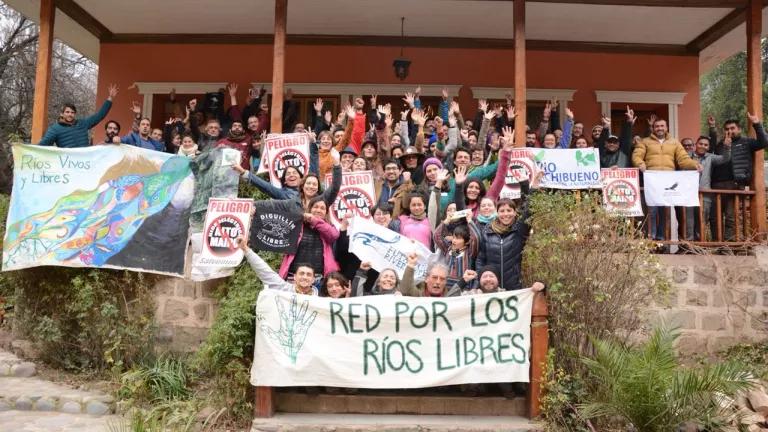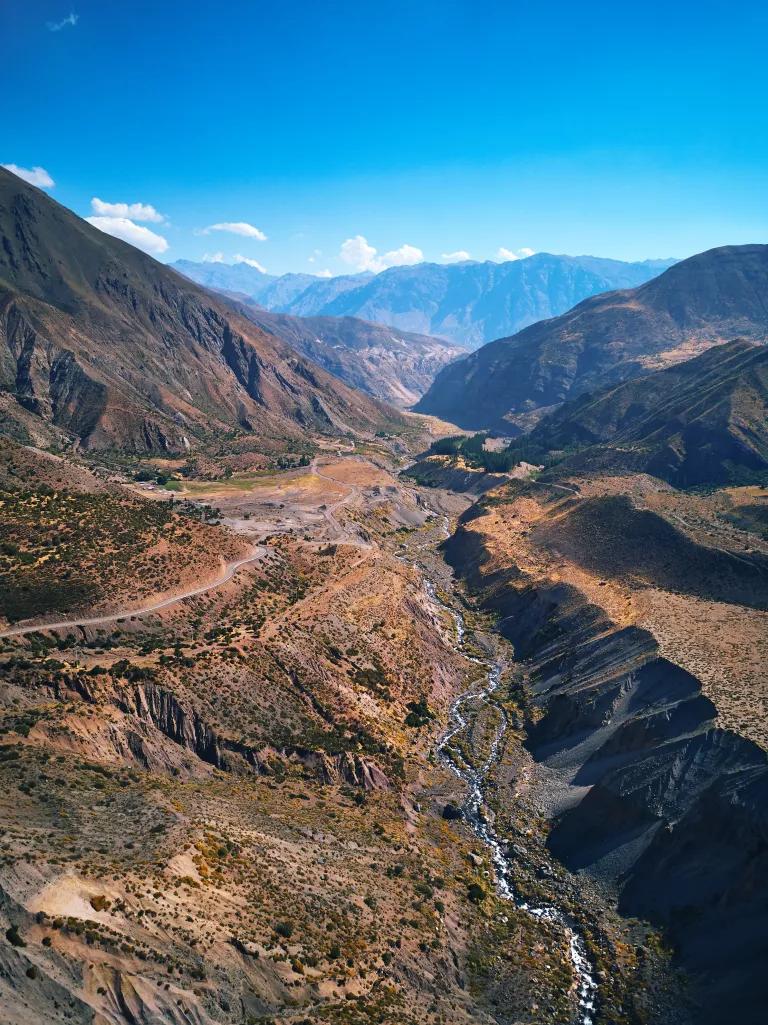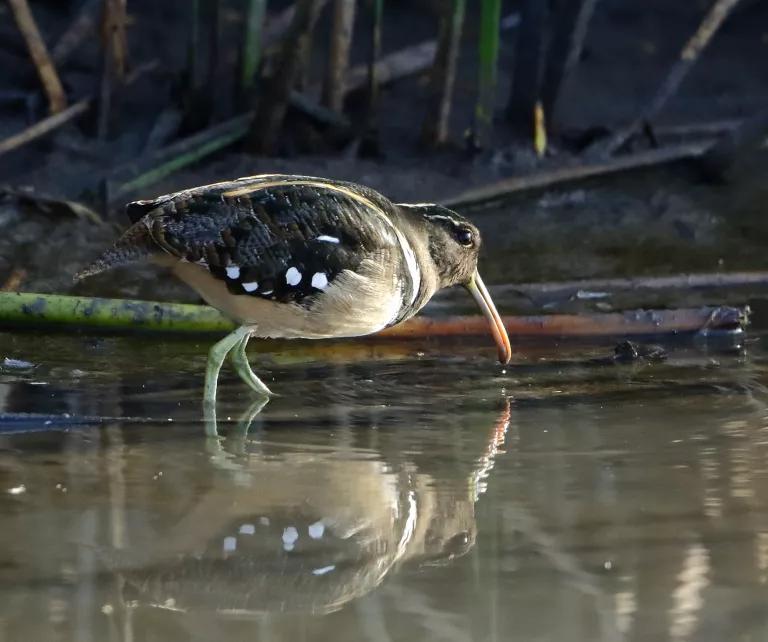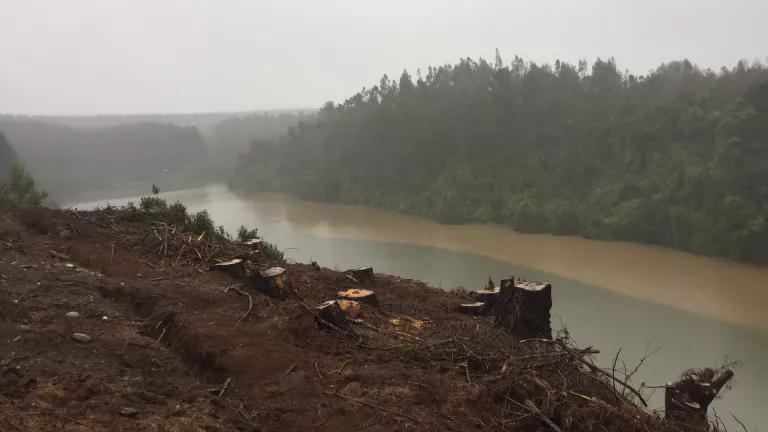Chile’s River Protector Network Rejects Alto Maipo Complex

This blog post was co-authored with Andrea Becerra
Water scarcity has become a mounting crisis in Chile. The country has been ranked as one of the most prone to water stress in the Western Hemisphere. Despite its reputation as one of the region’s advanced economies, Chile lacks an integrated watershed management system, which could help allocate limited resources efficiently and sustainably. As a result, the country’s rivers have been—and continue to be—threatened by various damaging industries, notably the energy sector.
Fortunately, grassroots social movements have defeated several controversial large hydroelectric dam proposals in recent years, disproving energy companies’ claims that Chile needs more hydroelectric power. Chile already has double the total installed capacity of energy (22.6 Gigawatts or GW) than the maximum hourly demand (10.7 GW). Yet multiple projects are approved or in construction, posing significant risks and impacts for fragile river ecosystems.
To safeguard basins from industrial over-development, more than one hundred social and environmental activists from twenty-five national and international organizations gathered on June 22-24 for the sixth summit of the Red por los Ríos Libres (Network for Free-Flowing Rivers). The conference was held near Santiago in Cajón del Maipo—a canyon nestled among rolling Andean foothills—where the Alto Maipo hydroelectric project threatens the capital city’s main water supply. We both had the privilege of attending the meetings on behalf of NRDC. The weekend culminated in a sobering “conflict tour” of the Alto Maipo construction sites. We provide more context on the Alto Maipo project below, along with this video that captures scenes from the summit.
Alto Maipo Project: What’s at Stake?
The proposed 531 MW complex is made up of two run-of-the-river projects, Alfalfal II (264 MW) and Las Lajas (267 MW), that would be operated by the Chile-based energy firm, AES Gener (owned by U.S. firm AES Corporation). To produce this energy Alto Maipo would divert water from the Volcán, Yeso and Colorado tributaries of the Maipo basin through a 70-kilometer (43 miles) tunnel, leaving parts of the basin dry. This is not your typical run-of-the-river project. It’s what some environmentalists have dubbed a “piped dam.” More than two million cubic meters of water would travel through the tunnel, equivalent to two of Chile’s national stadiums filled with liquid. The project—currently under construction by AES Gener’s contractor Strabag—is financed by nine banks, including the World Bank’s International Finance Corporation (IFC) and the Inter-American Development Bank (IDB).

During the summit, we visited Alfalfal, a town situated along the Colorado River, a tributary of the Maipo River which has been walled-in to protect from dust pollution due to the construction. Residents have seasonal employment for the construction project, but this has come at the expense of more secure and sustainable opportunities in eco-tourism. The Cajón del Maipo is a recreational destination for visitors from Santiago or those passing through the city who want to hike, kayak, see glaciers, and dip into hot springs. Nearly two million national and international tourists visit the Metropolitan Region each year.
In 2001, the Cajón del Maipo was named a tourist zone (Zona de Interés Turístico, ZOIT), which prioritizes conservation initiatives under the Chilean Tourism Law . Indeed, the valley is surrounded by beautiful landscapes, including the glacial cirque of the El Morado Natural Monument. Among the endangered species endemic to the Metropolitan Region that depend on the Maipo basin are the Tollo (Diplomystes chilensis), a velvet catfish that glides through the river scavenging for food, and a large lizard that scampers the canyon called the “Volcano Growler” (Pristidactylus volcanensis). Several birds are also threatened, including the White-Faced Ibis (Plegadis chihi) and the spotted South American painted-Snipe (Nycticryphes semicollaris, pictured below), both deemed beneficial for agriculture by the Ministry of the Environment.

AES Gener claims that the complex would not affect biodiversity or tourism activities. However, environmental activists argue that drying out parts of the basin would pose serious consequences.
An ecologically-healthy Cajón del Maipo is not only critical for the local community and agricultural industry (120,000 hectares of irrigation). The capital, Santiago, depends on the Cajón to regulate the region’s climate and to provide a source of potable water for the more than 7 million residents that live in the city (43 percent of Chile’s total population). Amid increasing concerns over Chile’s water security and major water cuts in Santiago, scholars and environmentalists have questioned the quality of the potable water sourced downstream from Alto Maipo’s construction.
Where Is the Project Today?
Since the start of the Alto Maipo project in 2008, costs have risen from $600 million to above $3 billion USD, making it one of the most expensive hydroelectric projects in Latin America. Diminishing water flows mean that the project is expected to produce 20-30 percent less energy than originally estimated. Moreover, non-conventional renewable energy sources like wind and solar have fallen in price significantly below Alto Maipo’s rate. It’s no surprise, then, that multiple investors have pulled out of the project (including Mizuho, Antofagasta Minerals and Constructora Nuevo Maipo).
As a result of the grassroots efforts of the #NoAltoMaipo citizens’ movement, the IDB and the World Bank are investigating the risks and impacts of their loans distributed for the project.
Finally, the current Water Code provides little institutional capacity for integrated water management, and leaves much of the water at the market’s whim. But reform of the Water Code may be another avenue for preventing future projects like Alto Maipo from happening in the region.
Building Resistance
The sixth summit of the Red por los Ríos Libres provided an opportunity for environmental activists throughout Chile to reflect on common threats to basins across Chile, bringing new momentum to the struggle against Alto Maipo and similar extractive projects:
"The sixth summit of the Red por los Ríos Libres was a very important milestone in the actions we have developed to oppose the Alto Maipo project. The solidarity, support and commitment we have received from so many men and women who, like us, fight to save our watersheds and protect our rivers so they can continue to flow freely…in addition to being moving, give us a new impetus to move forward with our cause for the protection of Cajón del Maipo and the water of Santiago,” said Marcella Mella, spokesperson for the Citizen Coordinating Committee in Defense of the Cajón del Maipo.
The next summit of the Red por los Ríos Libres is slated for October and will be held in San Pedro de Atacama located in the north of Chile, where a boom in lithium extraction is causing water scarcity for Indigenous Peoples, and threatening species like flamingos in the region’s iconic salt flats.
To learn more about the ongoing threat of hydroelectric energy development on rivers and communities in Chile, explore our interactive map.
This blog post was co-authored with Andrea Becerra who recently graduated from The Fletcher School at Tufts University with a Masters in International Environment and Resource Policy and Integrated Water Management. She is a consultant for NRDC focusing on urban and rural water management issues in Latin America.



